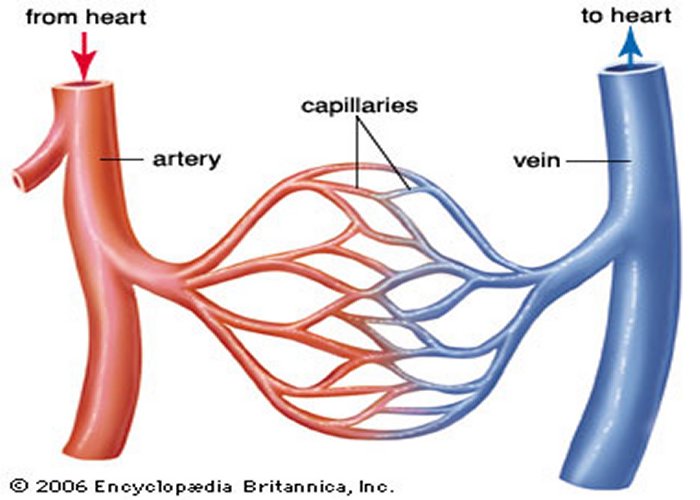Network Of Miles-Long Blood Vessels In Human Body
MessageToEagle.com – Your blood vessels may be tiny but they cover a lot of ground and could circle the globe. The network of blood vessels is startlingly very long, though they are relatively small.
The smallest blood vessels measure only five micrometers. To give you some perspective, a strand of human hair measures about 17 micrometers.
But if you took all the blood vessels out of an average child and laid them out in one line, the line would stretch over 60,000 miles.

An adult’s would be closer to 100,000 miles long.
Considering that the circumference of the Earth is 24,873.6 miles, according to NASA, that means your blood vessels could circle the earth about 2.5 times!
Working as a team, blood vessels carry a million barrels of blood in a lifetime. The blood in your body is continuously flowing. Every day, your heart pumps about 1,800 gallons of blood through your blood vessels. Over the course of a lifetime, this vast system carries about a million barrels of blood throughout the body.
This great blood vessel mechanism consists of arteries, veins, and capillaries and they all work together.
Arteries carry oxygenated blood away from the heart and their strong, muscular middle layer helps pump blood through the body.
Capillaries (the smallest of the blood vessels) connect the arteries to veins. The arteries deliver the oxygen-rich blood to the capillaries, where the actual exchange of oxygen and carbon dioxide occurs. The capillaries then deliver the waste-rich blood to the veins for transport back to the lungs and heart.
Veins carry the blood back to the heart. They’re similar to arteries but not as strong or as thick. Unlike arteries, veins contain valves that ensure blood flows in only one direction.
MessageToEagle.com
Expand for referencesReferences:
Related Posts
-
 Mythical Beautiful Adarna Bird And Its Harmful Magical Power In Mythology Of Philippines
No Comments | Jan 25, 2017
Mythical Beautiful Adarna Bird And Its Harmful Magical Power In Mythology Of Philippines
No Comments | Jan 25, 2017 -
 Rare MC1R Gene Reason Why Redheads Are Genetically Superior And Special
No Comments | Dec 29, 2016
Rare MC1R Gene Reason Why Redheads Are Genetically Superior And Special
No Comments | Dec 29, 2016 -
 95% Of All Modern Europeans Descended From The Seven Daughters Of Eve
No Comments | Dec 13, 2019
95% Of All Modern Europeans Descended From The Seven Daughters Of Eve
No Comments | Dec 13, 2019 -
 Kudurru Of Melishihu – Stone Records From The Kassite Dynasty In Babylonia
No Comments | Jan 17, 2016
Kudurru Of Melishihu – Stone Records From The Kassite Dynasty In Babylonia
No Comments | Jan 17, 2016 -
 Unexplained Disappearance Of Kenny Veach And Mysterious M Cave In The Nevada Desert
No Comments | Jan 20, 2018
Unexplained Disappearance Of Kenny Veach And Mysterious M Cave In The Nevada Desert
No Comments | Jan 20, 2018 -
 Legendary Ynglings: Descendants Of The Norse Gods And Oldest Scandinavian King Dynasty
No Comments | Mar 14, 2023
Legendary Ynglings: Descendants Of The Norse Gods And Oldest Scandinavian King Dynasty
No Comments | Mar 14, 2023 -
 Is Rh Negative Blood Type Of Extraterrestrial Origin?
No Comments | Oct 14, 2014
Is Rh Negative Blood Type Of Extraterrestrial Origin?
No Comments | Oct 14, 2014 -
 Strange Case Of A Dead Galaxy – What Happened To All The Stars?
No Comments | Aug 16, 2017
Strange Case Of A Dead Galaxy – What Happened To All The Stars?
No Comments | Aug 16, 2017 -
 How Is A Rainbow Formed?
No Comments | Feb 2, 2016
How Is A Rainbow Formed?
No Comments | Feb 2, 2016 -
 The Eiffel Tower Housed A Scientific Laboratory
No Comments | Feb 8, 2016
The Eiffel Tower Housed A Scientific Laboratory
No Comments | Feb 8, 2016

